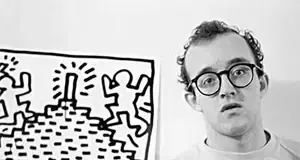Curing Cancer One Masterpiece at a Time!™
Is Art an Investment?
The art world has long fascinated investors and collectors alike. With the allure of masterpieces by blue-chip artists like Picasso and Monet, and the dynamic nature of contemporary art, many wonder: is art a good investment? Are there art investors? This post explores the intricacies of art investment, the art market, and how art compares to other asset classes like stocks and real estate.
Art can be a lucrative investment, but it's crucial to approach it with the right knowledge and expectations. Unlike traditional investments such as stocks and bonds, art offers both aesthetic pleasure and the potential for significant financial return. However, it's important to understand that art investment comes with its own set of challenges and risks. Pieces of art aren’t as liquid as stocks and bonds, and art marketplaces can feel much like Wall Street - run by art collectors, art auctions, and art galleries from New York to London with a hawk’s eye for high net-worth individuals who don’t know the valuation or quality of work from Basquiat to Warhol.
Art, as an alternative asset class, has the potential to diversify an investment portfolio, providing a hedge against market volatility. Unlike traditional investments, art is not easily liquidated, which can be seen as a drawback. However, this illiquidity can also be a boon, often shielding art from the same market fluctuations that impact more liquid assets. This unique characteristic of art investment can be a game-changer for those seeking to diversify their portfolio.
Art investment, like any investment, carries its share of risks. Factors such as market trends, artist reputation, and economic conditions can significantly influence the value of art. While some works may appreciate over time, others may not. It's important to note that today’s art sales aren’t always indicative of your art collection’s long-term investment potential. This unpredictability can make art a high-risk, high-reward investment vehicle, and it's crucial to be aware of these risks before diving into the art market.
Why Do Millionaires Invest in Art?
Millionaires invest in art for several reasons:
- Diversification: Art provides a way to diversify an investment portfolio beyond traditional assets.
- Tangible Asset: Unlike stocks or bonds, art is a tangible asset that can be enjoyed visually.
- Investing in high-quality, fine art pieces not only offers potential financial gain but also comes with a sense of cultural prestige and status. It's a way to contribute to the preservation and appreciation of our cultural heritage.Potential Appreciation: Historically, blue-chip art by renowned artists like Van Gogh and Warhol has shown significant appreciation over time.
Fine art can be a good investment, particularly if you invest in blue-chip artists whose works have a history of appreciating in value. However, it's important to do thorough research and consult with art advisors or dealers to make informed decisions. Blue-chip artists come with high prices. That’s we we suggest including emerging artists as well.
Art can be a good financial investment, especially for those who understand the art market and are willing to take on the associated risks. Art investments have shown solid returns, particularly in recent years, with some pieces achieving record sale prices at auction houses like Sotheby’s and Christie’s.
An art collection can be a good investment if it includes works from reputable artists and is curated with an understanding of market trends. Building a collection takes time, knowledge, and often, the advice of experienced art advisors.
Art can be a valuable asset class for diversifying an investment portfolio. Its low correlation with traditional financial markets means it can act as a hedge against stock market volatility. However, it's best suited for investors who have a long-term horizon and can afford to hold illiquid assets.
How Do I Start Investing in Fine Art?
To start investing in fine art, follow these steps:
- Research: Study the art market, familiarize yourself with different art movements, and follow trends.
- Consult Experts: Engage with art advisors, dealers, and auction houses to get professional advice.
- Set a Budget: Determine how much you're willing to invest and stick to it.
- Attend Art Fairs and Auctions: Visit art fairs and auctions to see works firsthand and understand their market value.
- Diversify: Invest in a variety of artists and styles to spread risk.
Comparison with Stocks:
- Volatility: Stocks are more liquid but can be highly volatile. Art is less volatile but also less liquid.
- Returns: Stocks can offer quick returns based on market performance, while art typically appreciates over a longer period.
- Dividends: Stocks can provide dividends, offering a regular income stream. Art does not generate income until sold.
Comparison with Real Estate:
- Liquidity: Real estate is also less liquid, similar to art. Both require longer holding periods to realize significant gains.
- Tangible Assets: Both art and real estate are tangible assets, providing physical value and aesthetic enjoyment.
- Appreciation: Real estate values are influenced by location, market trends, and economic factors. Art values are influenced by artist reputation, provenance, and market trends.
Art has shown to perform well over the long term, often outpacing traditional assets like stocks and bonds in specific periods. During times of economic instability, art can serve as a stable store of value. However, its performance is highly dependent on market conditions and the individual artist’s market standing.
What Factors Should I Consider Before Investing in Art?
- Market Trends: Understand current trends in the art market.
- Artist Reputation: Research the artist’s background, career trajectory, and market demand.
- Provenance: Ensure the artwork’s history and authenticity are well-documented.
- Condition: The physical condition of the artwork can significantly impact its value.
- Liquidity: Be prepared for the illiquid nature of art investments.
- Costs: Consider additional costs such as insurance, storage, and transaction fees.
How Does Art Appreciation Affect Its Value as an Investment?
Art appreciation can significantly increase an artwork’s value. Factors contributing to appreciation include the artist’s growing reputation, increased demand, and cultural significance. High-profile exhibitions and media coverage can also boost an artwork’s market value.
Risks:
- Market Volatility: Art prices can be volatile and subject to market trends.
- Illiquidity: Art is not easily converted to cash, requiring time to find the right buyer.
- Subjectivity: Art values can be subjective and influenced by changing tastes and trends.
Returns:
- Potential Appreciation: High-quality art can appreciate significantly over time.
- Diversification: Art can diversify an investment portfolio, reducing overall risk.
- Tangible Enjoyment: Unlike stocks, art provides aesthetic enjoyment and cultural value.
Potential returns on art investment can vary widely. Blue-chip artists like Basquiat and Warhol have seen significant appreciation, with some works selling for millions at auction houses like Sotheby’s and Christie’s. Emerging artists also offer potential high returns if they gain recognition and market value over time.
Investing in art can be a rewarding endeavor, both financially and aesthetically. While it carries risks, the potential for significant returns, coupled with the enjoyment of owning beautiful works of art, makes it an attractive option for many investors. By understanding the art market, consulting with experts, and making informed decisions, you can navigate the world of art investment like a pro. Happy collecting!



